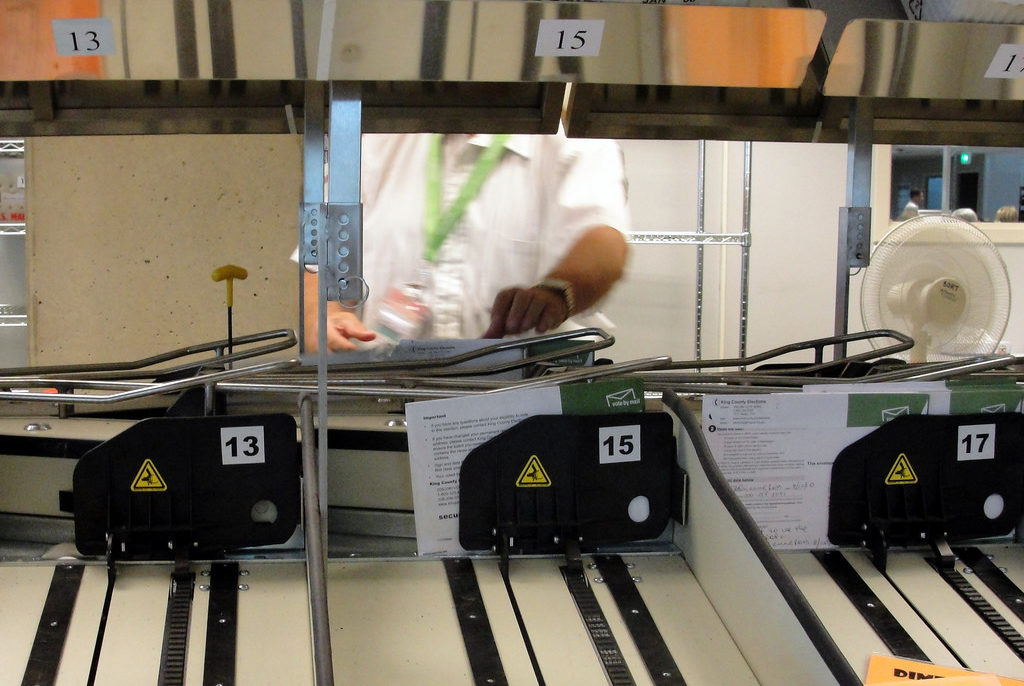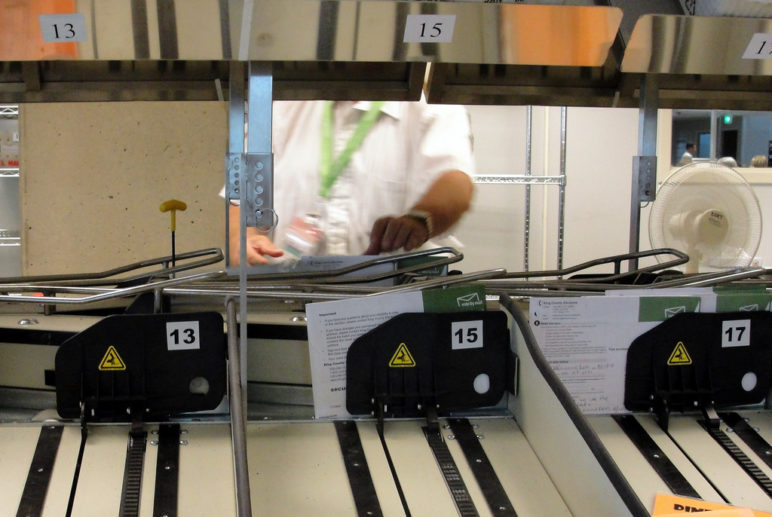Nearly 70 percent of the time, primary election voters choose city officials and voters who only vote in the general election have no say.
Primary election voters are choosing most of Portland’s elected officials, while general election voters are shut out of decisions about city leadership. Since 2008, Portlanders have voted in three mayoral elections and ten elections for city councilors. In nine of those races, one candidate won a majority of votes in the primary and got elected, without having to run in the general election. Only four went on to the general election ballot. In other words, nearly 70 percent of the time, primary election voters choose city officials and voters who only vote in the general election have no say.
When elections end with the primary, fewer voters get a say in the city’s democracy. And it isn’t a random group of voters who are excluded—voters who participate in the general election but not the primary tend to be more racially and ethnically diverse and younger than primary voters. Primary voters are making most of the decisions about Portland’s government, but they are not reflective of the city as a whole or even of voters as a whole. Voters of color and younger voters turn out in bigger numbers for the general than for the primary, making primary voters whiter and older than general election voters.
Often, twice as many Portlanders vote in the general election as in the primary
When the race ends with the primary, lots of Portlanders don’t have a voice. As the graph below shows, every election year, more than 100,000 Portlanders who didn’t vote in the primary vote in the general election. For example, in 2016, more than 330,000 Portlanders voted in the general election, but only 216,000 voted in the primary. That means 114,000 voters turned in a general election ballot but never had a chance to vote on Portland Mayor or Council Position 1.
Note that all the graphs in this article show all voters who turned in a ballot for that election, but some of those voters might not have cast a vote in all city races. For example, some voters might have turned in a ballot with votes for president and US Congress but did not fill in bubbles for city council.
 The “Primary Dip” disproportionately disadvantages Portland voters of color
The “Primary Dip” disproportionately disadvantages Portland voters of color
Another way to look at the sharp difference in turnout from the primary to the general is to think of it as the “Primary Dip,” the percentage decrease in voters between the general and the primary. Every year, 35 to 55 percent fewer Portlanders vote in the primary than in the general. But the Primary Dip is always bigger for voters of color than for white voters. For example, in 2016, people of color (African Americans, Asian Americans, and Latinxs) had a 52 percent dip in turnout in the primary, while white (non-Latinx) people had only a 34 percent dip.

Voters of color are a bigger percentage of voters in general elections than in primaries in Portland
While the “Primary Dip” disenfranchises 100,000 Portland voters, it isn’t a random sample of 100,000 that is impacted. Voters of color are more likely than white voters to lose out in the primary. While voters of all races turn out in much bigger numbers for general elections than for primaries, Portlanders of colors increase their turnout from the primary to the general even more than white voters. As a result, voters of color make up a bigger percentage of all voters in general elections than in primary elections. African American, Asian American, and Latinx voters have a relatively bigger voice in general elections and a relatively smaller voice in primary elections in Portland.
 Voters of color vote at lower rates than white voters in Portland
Voters of color vote at lower rates than white voters in Portland
About 20 percent of voting age Portlanders are people of color (African American, Asian American, or Latinx), but often less than 10 percent of voters are people of color. In other words, Portlanders of color are punching below their weight in elections. And that is even more true in primary elections where as few as five percent of voters are people of color.
It is possible those numbers slightly underestimate the reality. The data comes from the Voter Activation Network VoteBuilder database which uses first, middle, and last name as well as the demographics of the precinct to estimate each voters’ race. The database might under-identify people of color if they have commonly white names. The database can’t accurately identify Native American voters, so they might be misidentified as white. Finally, some of the voters of “unknown race” in the database might actually be people of color, though that is less than one percent of voters. In reality it is possible that up to 12 percent of Portland voters in general elections and up to 8 percent in primaries are people of color, but in any case, they are turning out to vote at lower rates than white people.
The graph below shows the racial and ethnic breakdown of the Portland electorate, according to the VoteBuilder database. While voters of color make up a bigger percentage of general election voters, they are a fairly small piece of the electorate in every election.
 Portland primary voters are old
Portland primary voters are old
Primary voters may not select representatives that reflect all Portland adults because primary voters are disproportionately older. Portand’s voting age population is relatively young—most people are under 50 and only 13 percent are older than 65. But primary voters are much older—most are 50 and older, and more than one-quarter are 65 and older. General election voters are in between—most are under 50, and less than 17 percent are 65 or older.

Original Sightline Institute graphic, available under our free use policy.
Primaries disproportionately disenfranchise younger voters of color
Portland’s primaries give more voice to an older, whiter portion of the population. While Portland voters are whiter and older than the overall voting age population, the skew is particularly pronounced in primary elections. This might not be such a big deal if the primaries weren’t that important, but in Portland city elections, they are often all-important! When city elections end with the primary, they disenfranchise 100,000 Portlanders. And those 100,000 aren’t a random sample—they are more likely to be younger people and people of color who would like a say in the city’s leadership.





 The “Primary Dip” disproportionately disadvantages Portland voters of color
The “Primary Dip” disproportionately disadvantages Portland voters of color Voters of color vote at lower rates than white voters in Portland
Voters of color vote at lower rates than white voters in Portland Portland primary voters are old
Portland primary voters are old






DaveB
Hi Kristin – You say that people “have no say” and “disenfranchised” because of Portland’s voting rules. But doesn’t everyone receive a vote-by-mail ballot? If so, how are they disenfranchised? (I’m questioning your word choice, not the fact that it appears to be a system that is no longer accomplishing what it was originally designed for (and I’m not quite sure what its purpose was).
Would a solution be for Portland be to simply move those races to election to General election and award the office the same way all other offices are filled – highest vote?